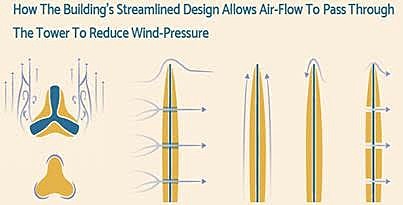October 15, 2018 – I have just come back from 12 wonderful days in Portugal where my wife and I visited Porto in the north, Algarve in the south, and Lisbon in the centre of the country. I am jet-lagged but otherwise re-energized to get back to posting the latest technology and science news that comes from my daily searches and from readers who send me stories.
One of these comes from a roofing specialist, Rubberbond, who has created an infographic to illustrate and describe the world’s newest tall structures either under construction or in the planning stage. These are 21st-century constructs designed to be aerodynamic and capable of handling what nature can throw at them. They are designed as well to take into consideration the speed of the Earth’s rotation at each site creating structures built with a twist from lower to higher floors.
All of these new buildings surpass Toronto’s CN Tower, (553 meters, 1,820 feet) currently the tallest free-standing structure in the Western Hemisphere. And one will exceed the height of the current tallest building in the world, the Burj Khalifa, Dubai, United Arab Emirates, which stands 829.8 meters (2,722 feet).
My wife and I have been to restaurant and viewing deck of the CN Tower and have felt the winds that blow against the building. We have also visited New York City and the Empire State Building, an engineering marvel completed in 1930 and at the time the tallest structure in the world for more than 50 years. But compared to what is on the drawing boards or nearing completion the CN Tower and Empire State Building are not just pipsqueaks, they are also antiquated.
I hope you find this contribution of interest and welcome your comments and feedback.










